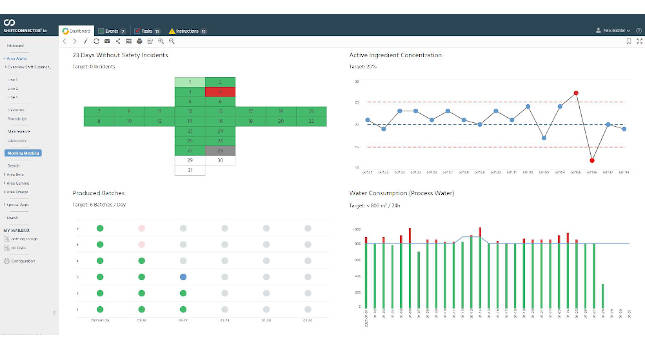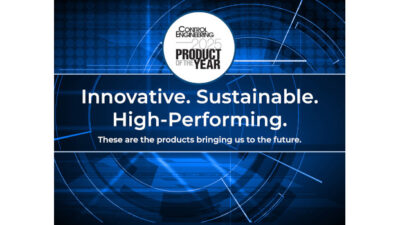Process manufacturing industries is undergoing a transformation as a wave of cognitive computing applications and infrastructure, collectively known as Industry 5.0, is changing how goods are produced.

The impact the process manufacturing industry has on society today should not be underrated. Process manufacturing is a production method that uses formulas or recipes to produce goods through the reaction of ingredients or raw materials used in biotech, pharma, and chemical operations versus discrete manufacturing, which is characterized by distinct unit production.
Process manufacturing industries will undergo another transformation as a new wave of cognitive computing applications and infrastructure, collectively known as Industry 5.0, will revolutionize chemical, pharmaceutical, and biotechnology manufacturing. It is important to understand how the initiative is defined and all the implications it brings.
For starters, Industry 5.0 comprises how people will be working alongside robots and smart equipment. Shift-to-shift communication, of course, involves leading people in manufacturing plants to share information. Today, this is human to human, but with Industry 5.0, robots will be helping humans work better and faster by leveraging the Internet of Things (IoT) and Big Data. It’s pertinent to have the personal human touch that needed being more present in the Industry 4.0 pillars of automation and efficiency.
Robots have often executed dangerous, monotonous or physically demanding work, such as welding in automotive factories or loading and unloading heavy materials in warehouses. As Industry 4.0 brought smarter and more connected machines in the workplace, Industry 5.0 goes one step further by merging those cognitive computing capabilities with human intelligence and resourcefulness in collaborative operations.
Industry 4.0 innovations
All the innovative and Smart Manufacturing applications emerging from Industry 5.0 such as computing design innovations came along with the evolution of the IoT. After the arrival of Industry 4.0, the process industry began to transform through the adoption of intelligent applications consisting mainly of cyber-physical systems and enabled applications to have machine-to-machine (M2M) interactions. While this evolution has focused on sensors and data, it has changed production for process industries by bringing greater transparency to processes such as high volume or batch production.
Industry 4.0 and IIoT concepts do not come without limitations as they have mainly focused on M2M automation and have not realized the human factor as an integral and creative contributor to better performance. Machines can only deliver what they have been programmed to do whereas people bring innovation and creativity. Only people can be problem solvers in handling anomaly situations that may occur in the plant. People also can be instrumental in dire situations that may involve complex and hazardous manufacturing processes.
The growing trend toward robotics is should not be seen as an opportunity to reduce headcount and replace employees who perform repetitive tasks on manufacturing plants. Process manufacturers that understand the value of human intuition and problem-solving capabilities will be the ones to thrive when Industry 5.0 takes hold. Removing people from the equation results in some problems that are hard to solve.
Humanizing Industry 4.0
The next evolutionary step in process manufacturing is the concept of a machine-assisted human that will leverage IIoT as well as artificial intelligence (AI). In labs and in R&D, AI has already made a difference in these two areas and is beginning to be applied to support processes on the shop floor with powerful cognitive applications. The key notion is to make data useful for people so people and machines can work together as teams to build a stronger, more resilient system.
A great application involving AI systems can be seen in helping speed product development such as with drug manufacturing. AI can assist humans delivering the right data to analyze from experimentation through to the manufacturing processes. The insights attained from AI and delivered to the human for data analysis can reduce the time it takes to create pharmaceuticals as well as lower costs.
Another example encompasses Boeing’s Airpower Teaming System where AI-controlled drones fly in support of manned aircraft thus expanding the abilities of military airborne missions. These increased capabilities that team man with machine illustrates a new level of machine-assisted human collaboration.
[subhead] Industry 5.0 is the next step for process manufacturing
Industry 5.0 will soon (if not already) support the recognition and acceptance needed to combine the speed and accuracy of technology with the creative and cognitive skills of people. This will result in a more robust and competitive system. Co-existence delivers many opportunities for exploration, including new and exciting personnel positions because people will get away from boring and monotonous tasks and instead be empowered to use their inherent cognitive skills to bring even greater value to the plant floor.
Industry 5.0 may even bring the development of new social contracts and better communication on the factory floor. In addition to communication between humans and their robots, there will be greater opportunities for more human-to-human collaboration in more substantial ways, evoking information that will drive resilience, accountability and ensure compliance. For example, human-led operations can respond to adverse events or help mitigate risk from major disasters such as the pandemic. Let’s face it – when it is all said and done, it’s people who are in charge, not the machines.

Intelligent plant process management
For the reasons described above, concepts such as plant process management (PPM) should not be underestimated. A safe and efficient plant is most effectively run by a workforce powered with contextual information that involves all physical processes taking place. The requirements met by PPM apply to any type of factory, irrelevant of how much IoT instrumentation, machine learning (ML) or predictive maintenance is deployed. It is important to allow knowledge to be ingested and analyzed from any human and machine contact point in the manufacturing process.
What is critical is to capture the knowledge at intervals, such as in shifts or during inspection routines, from all people involved in the production process. This digitally captured information can be delivered in real time to all constituents in the production process. From the plant floor all along the chain from operations to site managers, laboratories, shift managers, process engineers, production managers, all the way to the upper echelons of the organization, there is complete transparency for everyone involved, which means better decision making.
As Industry 5.0 proliferates in manufacturing environments, we can expect to see the delegation of far more complex tasks from machines in production plants as naturally as we now say “Alexa, play music.” It’s clear people (not robots) will continue using PPM and take responsibility for how well or how poorly their manufacturing plants perform. It’s not a question of whether a manufacturer can benefit from its employees working alongside robots, but rather how they can leverage AI-enabled technologies to drive optimal outcomes from human/machine interactions.
The manufacturers that thrive will be the ones that use technology to empower people to use their natural talents and capabilities to increase productivity. The expectation is Industry 5.0 will deliver an environment where human and machines successfully interconnect. This will enable meeting the challenges of future manufacturing complexities, including increasing customizations through optimized robotized manufacturing processes, which will require a high degree of collaboration. This will ensure more transparency, reliability and visibility across all plant functions to help teams better communicate and achieve optimal results. People-centric technology enables manufacturers to improve productivity, cost efficiencies, quality and safety.



